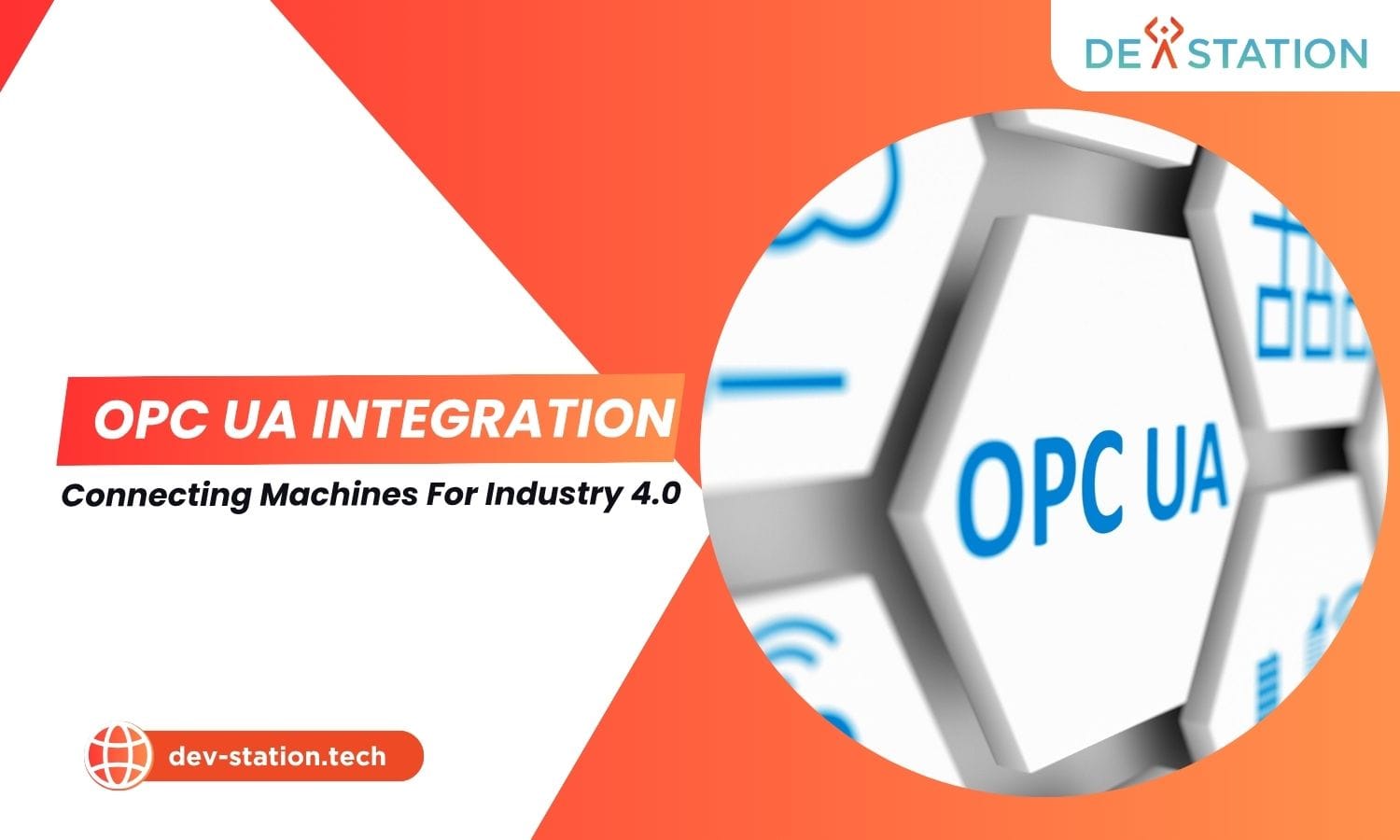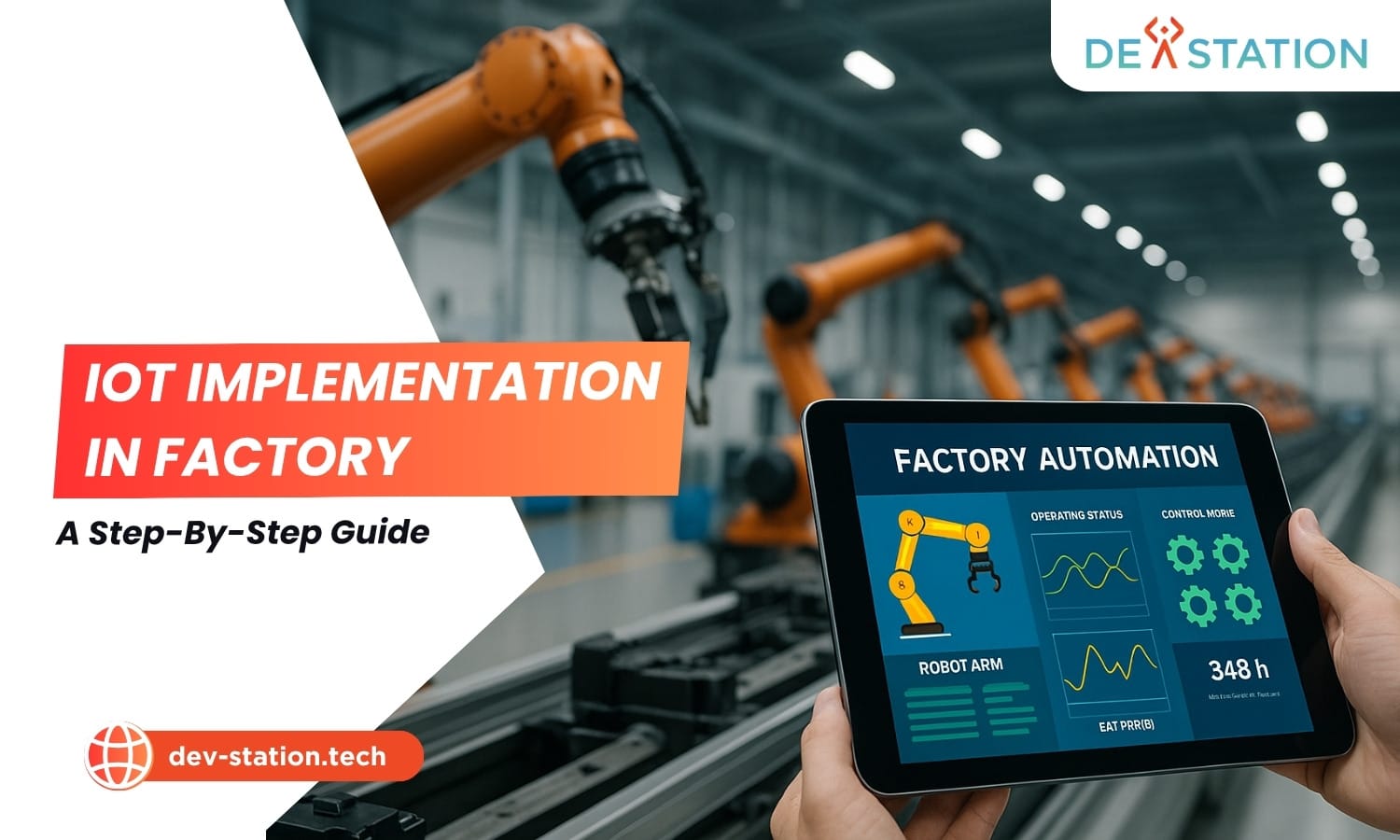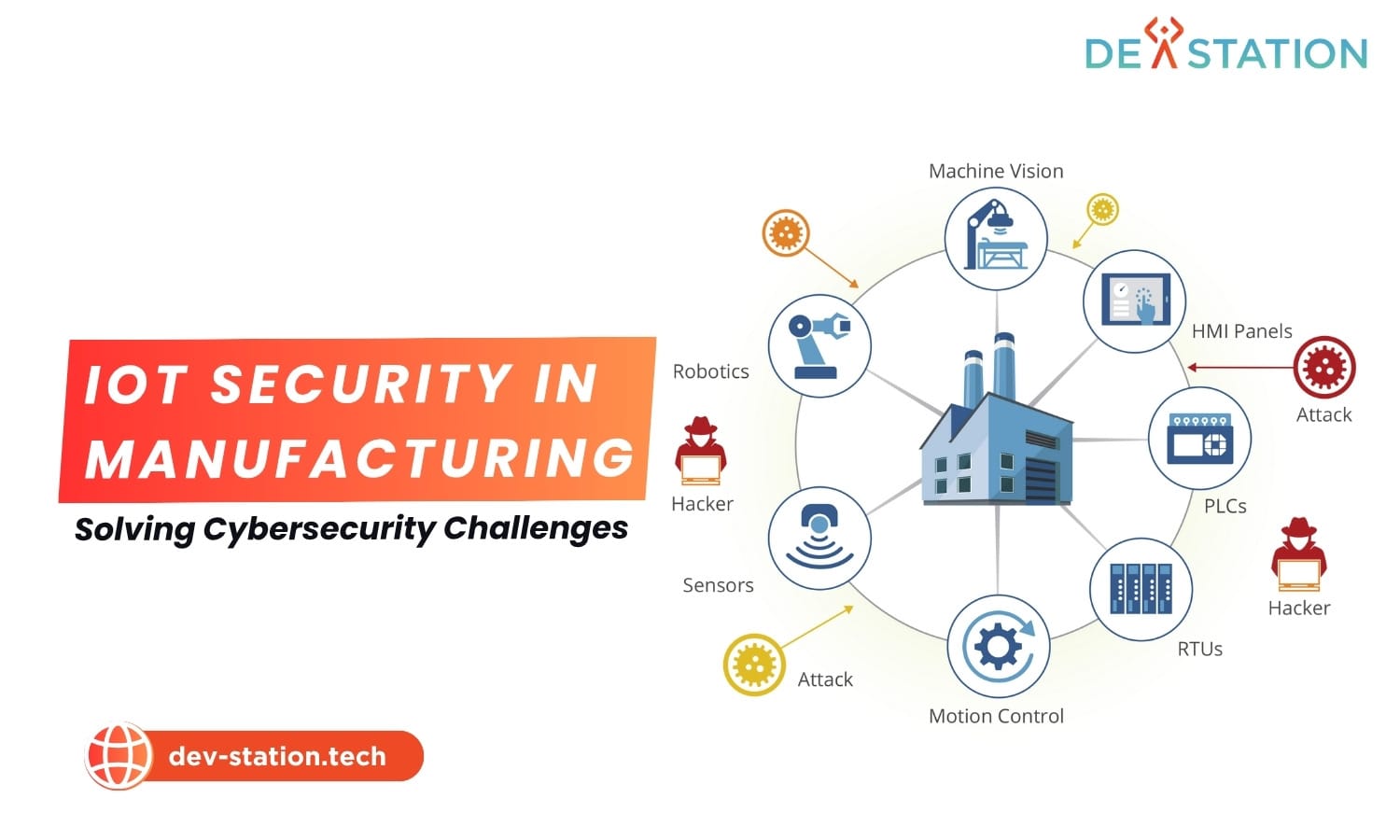OPC UA integration is the cornerstone of modern industrial automation, providing a secure and standardized method for machine-to-machine communication that bridges the gap between operational and information technology. To achieve seamless data acquisition and IT/OT convergence, explore the expert solutions at dev-station.tech for your industrial data communication needs. This guide explores the secure communication protocol and data modeling framework.
Contents
ToggleHow Do You Connect Industrial Machines With OPC UA Integration in 3 Steps?
Connecting industrial machines using OPC UA integration involves three primary stages: First, establishing a secure, authenticated connection to the OPC UA server on your asset. Second, browsing the server’s Address Space to identify the specific data points you need. Third, creating a subscription to receive real-time data updates and integrating that data into your target system like an IoT platform, MES, or SCADA.
Successfully implementing OPC UA connectivity is a transformative step for any manufacturing or industrial enterprise. It unlocks the data trapped within your operational technology (OT) assets, such as PLCs, sensors, and robots, making it available to your information technology (IT) systems for analysis, monitoring, and process optimization. This convergence is the foundation of Industry 4.0 and smart manufacturing. Dev Station Technology provides this clear, three-step guide to demystify the process and empower your engineers to achieve robust data exchange.
Step 1: How Do You Establish a Secure Connection?
To establish a secure connection, your OPC UA client must first discover the server’s endpoint URL. It then initiates a handshake, presenting its digital certificate. The server validates this certificate against its trust list, and if valid, a secure channel is created using a combination of security policies and message modes like Sign or SignAndEncrypt for robust data protection.
Security is a paramount feature of the OPC Unified Architecture. Unlike older, less secure protocols, OPC UA has built-in security from the ground up. The connection process is not a simple, open port communication; it is a meticulous, multi-stage process rooted in modern cybersecurity principles.
- Discovery: The client first needs to find the server. This can be done through a local discovery server (LDS) or by knowing the server’s endpoint URL directly. The endpoint URL looks similar to this:
opc.tcp://[ServerIPAddress]:[Port]. For instance,opc.tcp://192.168.1.100:4840. - Certificate Exchange: The core of OPC UA security is the X.509 certificate exchange. When a client first attempts to connect, it sends its certificate to the server. The server places this certificate in a rejected folder. An administrator must then manually move the client’s certificate from the rejected folder to the trusted folder. The client must also trust the server’s certificate. This one-time administrative action ensures that only explicitly authorized applications can connect.
- Secure Channel Creation: Once trust is established, the client and server negotiate a secure channel. They agree on a security policy (e.g., Basic256Sha256) and a message security mode (None, Sign, or SignAndEncrypt). For any sensitive industrial automation context, SignAndEncrypt is the recommended mode, as it provides both data integrity and confidentiality.
According to a study by the OPC Foundation, systems correctly implementing these security policies provide a level of protection that meets the demanding standards of industrial cybersecurity, forming a crucial part of a defense-in-depth strategy for the factory floor.
Step 2: How Do You Browse the OPC UA Address Space?
Once connected, the OPC UA client browses the server’s Address Space, which is a hierarchical, mesh-like structure of Nodes. By traversing this structure, the client can discover all available data points (Variable Nodes), their properties (Attribute Nodes), and how they relate to the physical machine, providing a rich, contextualized view of the asset.
The Address Space is perhaps the most powerful concept within OPC UA. It moves beyond the simple tag lists of older protocols. Instead of a flat list of memory addresses like `DB1.DBD4`, you get a fully modeled information structure. A single Node in the Address Space contains not just a value, but also metadata such as:
- NodeId: A unique identifier for the node within the server.
- BrowseName: A human-readable name, like MotorSpeed.
- DataType: The type of data, such as Float, Int32, or String.
- AccessLevel: Defines if the value is read-only or read/write.
- Description: A detailed text description of the data point.
This structured approach is a key enabler of data interoperability. An IT developer who has never seen a PLC can connect to an OPC UA server, browse the Address Space, and immediately understand that `Objects > Machine_1 > MainMotor > MotorSpeed` is the rotational speed of the main motor in RPMs. This self-describing nature drastically reduces integration time and eliminates the need for manual tag mapping and documentation, a process that can consume hundreds of hours in complex projects.
Step 3: How Do You Subscribe to Data and Integrate?
To get real-time data, the client creates a Subscription on the server. Within this subscription, it creates Monitored Items for each NodeId it needs to track. The server then pushes data changes to the client based on the subscription’s publishing interval, providing an efficient, report-by-exception communication model that is ideal for IT/OT integration.
Unlike the polling-based method of older protocols, where a client constantly asks a server for data, OPC UA’s publish-subscribe (Pub/Sub) model is far more efficient. This is a critical aspect of any modern IoT integration strategy.
The process works as follows:
- Create Subscription: The client asks the server to create a subscription, specifying parameters like the publishing interval (e.g., every 1000ms). This interval defines how often the server should send a notification containing data changes. A 2022 ARC Advisory Group report highlighted that this model can reduce network traffic by up to 80% compared to traditional polling protocols.
- Create Monitored Items: The client adds specific NodeIds to the subscription as Monitored Items. For each item, it can set a sampling interval (how often the server checks the value internally) and a filter (e.g., only send an update if the value changes by more than 5%).
- Receive Data Notifications: The server monitors the data points. When a value changes according to the defined criteria, it queues a notification. At each publishing interval, the server sends a batch of all queued notifications to the client. This data can then be routed to its destination, whether that is a database, a manufacturing execution system (mes), or a cloud IoT platform.
What Is OPC UA and Why Is It Essential for Industry 4.0?
OPC Unified Architecture (UA) is a platform-independent, service-oriented communication protocol for secure and reliable data exchange in industrial automation. It is essential for Industry 4.0 because it provides a standardized way to move contextualized data from the factory floor (OT) to enterprise systems (IT), enabling advanced analytics, predictive maintenance, and smart factory initiatives.
Developed and maintained by the OPC Foundation, OPC UA is the successor to the original OPC standard (now called OPC Classic). While OPC Classic was based on Microsoft’s DCOM technology and limited to Windows, OPC UA is fully cross-platform, capable of running on everything from tiny embedded devices to massive cloud servers. This platform independence is a key reason for its widespread adoption in modern production environments. The standard’s service-oriented architecture allows for a rich set of interactions far beyond simple data reading, including method calls, alarm management, and historical data access. This robust data modeling framework provides the semantic context needed for true interoperability between disparate systems.
What Are the Key Tools for OPC UA Integration?
The primary tools for OPC UA integration are OPC UA Servers, which are embedded in or run alongside industrial hardware to expose data; OPC UA Clients, which are software applications that consume data; and OPC UA Gateways or Connectors, which translate OPC UA to other protocols like MQTT or connect to higher-level platforms like SCADA or cloud services.
Choosing the right tools is critical for a successful integration project. These components work together to form a complete data pipeline.
| Tool Category | Function | Examples |
|---|---|---|
| OPC UA Servers | Expose machine data using the OPC UA standard. They model the asset’s information. | Siemens S7-1500 PLC (built-in), Kepware KEPServerEX, Prosys OPC UA Simulation Server. |
| OPC UA Clients | Connect to servers to read, write, and subscribe to data. | UaExpert (a diagnostic client), Ignition SCADA, custom applications built with Python or .NET SDKs. |
| OPC UA Gateways | Act as a bridge for protocol conversion, translating data between OPC UA and other protocols like MQTT or Modbus. | ThingsBoard IoT Gateway, AWS IoT SiteWise, Azure IoT Edge. |
What Are the Business Benefits of Successful OPC UA Integration?
The benefits include enhanced operational visibility by providing real-time access to machine data, improved decision-making through higher quality data, and reduced integration costs due to the standardized, self-describing nature of the protocol. It also enables advanced capabilities like predictive maintenance and digital twins, driving significant ROI.
A 2021 report from McKinsey & Company on smart factories found that companies leveraging technologies like OPC UA for data integration can see productivity increases of up to 25% and reductions in machine downtime by as much as 50%. The primary benefits are:
- Lower Total Cost of Ownership: By using a single, standardized protocol, companies reduce the need for custom drivers, complex gateways, and extensive manual configuration.
- Enhanced Security: The robust, certificate-based security model helps protect critical operational assets from cyber threats, a growing concern in connected environments.
- Future-Proof Scalability: The platform-independent and extensible nature of OPC UA ensures that today’s integration solutions will be compatible with tomorrow’s technology, from the edge to the cloud.
How Can You Overcome Common OPC UA Integration Challenges?
Common challenges such as complex network configurations, certificate management, and performance tuning can be overcome by adopting a structured approach. This includes collaborating closely with both IT and OT departments, using diagnostic tools like UaExpert to troubleshoot connections, and starting with a well-defined pilot project to build expertise and demonstrate value before scaling.
While OPC UA is powerful, implementation is not always trivial. Firewall configurations between the IT and OT networks can block the necessary ports. Managing the certificate trust lists for hundreds or thousands of devices can become a significant administrative task. Furthermore, poorly configured subscription parameters can lead to data overload or missed updates in a large-scale scada iot deployment. Working with a knowledgeable partner like Dev Station Technology can help your organization navigate these complexities, ensuring a smooth and successful project that delivers on its promises of seamless machine-to-machine communication.
How Can Dev Station Technology Help You Master OPC UA Integration?
Dev Station Technology provides expert consulting and development services to help you design, implement, and manage your OPC UA integration projects. Our team has deep expertise in both operational technology and cloud-native IT systems, ensuring a robust and scalable solution that bridges the IT/OT divide and unlocks the true value of your industrial data.
Whether you are taking your first steps in data acquisition or building a global smart factory platform, our experts are here to guide you. We offer services in architecture design, gateway configuration, custom OPC UA client and server development, and integration with leading IoT and analytics platforms. Do not let connectivity challenges hinder your digital transformation.
To learn more about how we can accelerate your journey to Industry 4.0, we encourage you to explore the resources at dev-station.tech or contact our solution experts directly for a consultation at sale@dev-station.tech. Let Dev Station Technology be your partner in building the future of industrial connectivity.





